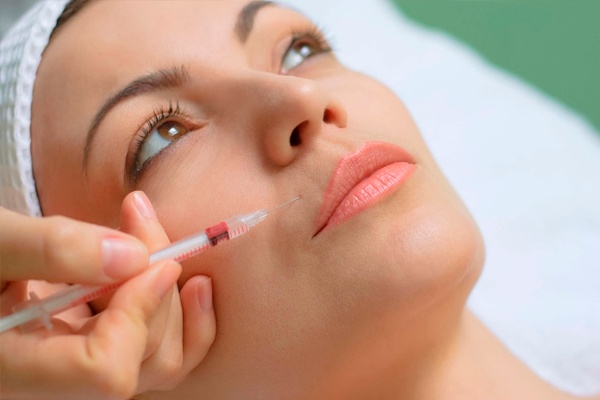Platelet-Rich Plasma (PRP) therapy has gained massive attention in the fields of aesthetics, dermatology, orthopedics, and even hair restoration. Despite growing clinical success and celebrity endorsements, myths about PRP still circulate and influence public opinion. From doubts about its efficacy to fears about safety, misinformation clouds a procedure that's increasingly backed by science and experience. Let’s break down the most common myths about PRP and bring clarity to what this powerful therapy truly offers.
Myth 1: PRP Is Just a Fad With No Scientific Backing
One of the most stubborn myths is that PRP is a temporary trend—something akin to snake oil. However, the reality is that PRP has been used for decades in medical specialties, including sports medicine and orthopedic surgery, to accelerate healing. Scientific studies continue to emerge, supporting its regenerative potential. PRP utilizes the patient’s own blood, concentrating the platelets which are rich in growth factors. These growth factors stimulate cell turnover and promote tissue repair. Over time, PRP has evolved into a well-respected treatment, especially for cosmetic and anti-aging applications. Whether used in scalp therapy or face prp treatment, its proven ability to enhance natural healing is well documented.
Myth 2: PRP Results Are Immediate and Miraculous
Social media and unrealistic marketing campaigns often make PRP seem like a magic bullet. Many people assume that one treatment will produce flawless skin, eliminate wrinkles, or restore hair instantly. This is not only misleading but harmful. Experts clarify that PRP is a biological process. It stimulates collagen production and cellular regeneration, which naturally takes time. Results typically become visible after several weeks, and most patients require a series of sessions to see optimal outcomes. PRP is about gradual, natural enhancement—not overnight miracles.
Myth 3: PRP Treatments Are Unsafe
Since PRP involves drawing and reinjecting your own blood, some worry about contamination or adverse reactions. But one of the safest aspects of PRP is that it’s autologous—it uses your own biological material, minimizing the risk of allergic reactions or rejection. Clinics that follow proper sterile protocols further ensure safety. The most common side effects are mild swelling, bruising, or redness at the injection site, all of which subside within a few days. Unlike synthetic fillers or harsh chemical treatments, PRP leverages what your body already has, making it one of the least invasive aesthetic procedures available today.
Myth 4: PRP Is Only for Celebrities or the Wealthy
Thanks to high-profile endorsements from celebrities like Kim Kardashian, many assume PRP is exclusive or unaffordable. However, PRP has become increasingly accessible in recent years. Clinics across the globe offer competitively priced packages, and because it requires minimal materials beyond what’s already in your body, the cost is often lower than that of surgeries or premium skin care treatments. Some clinics even offer payment plans or combine PRP with other therapies to deliver more value. What was once seen as a luxury is now a practical option for everyday people seeking rejuvenation.
Myth 5: PRP Is Only Useful for Anti-Aging
While PRP is widely known for its skin-rejuvenating benefits, its potential goes far beyond anti-aging. In dermatology, it treats acne scars, melasma, and even large pores. In trichology, it’s a leading therapy for male and female pattern baldness. Athletes and chronic pain patients benefit from PRP for joint and tendon healing. Dentists even use it post-surgery to accelerate recovery. In gynecology and urology, PRP is being explored for tissue regeneration and sexual wellness treatments. Limiting PRP to just cosmetic uses ignores the broad scope of its applications.
Myth 6: PRP Doesn’t Work for Everyone
No medical treatment works 100% of the time for everyone, and PRP is no exception. However, dismissing it entirely is equally misleading. PRP outcomes vary depending on factors such as age, lifestyle, skin condition, and the skill of the practitioner. Patients with healthy lifestyles and realistic expectations often report satisfying results. Moreover, using PRP as part of a comprehensive treatment plan—including microneedling, laser therapy, or supplements—can greatly enhance its effectiveness. What’s important is proper consultation and customization. A qualified specialist can assess if PRP is suitable for your specific needs.
Conclusion: Time to Separate Fact from Fiction
As with any popular treatment, PRP has attracted its share of myths and misunderstandings. But separating hype from reality is crucial for making informed decisions. When administered by skilled professionals, PRP offers a safe, natural, and effective solution for a wide range of conditions—not just aesthetic concerns. It’s not a miracle cure, but it is a scientifically backed therapy that continues to evolve with ongoing research.
Rather than dismiss PRP based on hearsay or outdated notions, consult experts, read peer-reviewed studies, and consider your personal goals. The best outcomes come when expectations are aligned with facts, and treatments are chosen with education, not emotion. In the end, PRP’s true power lies in its ability to stimulate the body’s own regenerative capabilities—a promising, personalized path to healing and rejuvenation.

Comments on “Myths About PRP You Still Believe—Debunked by Experts”